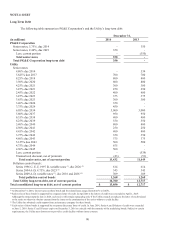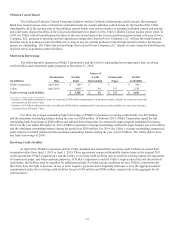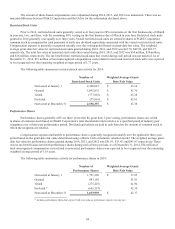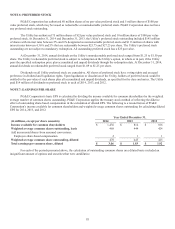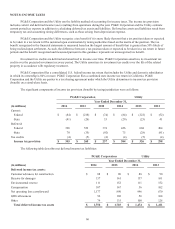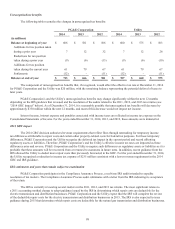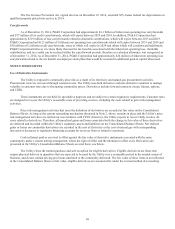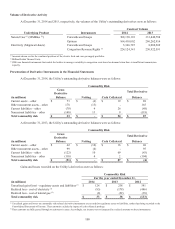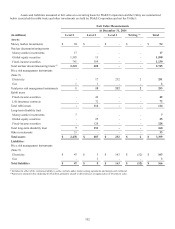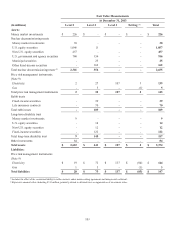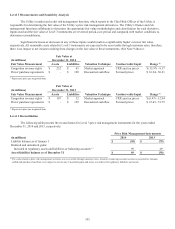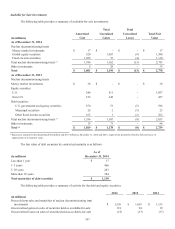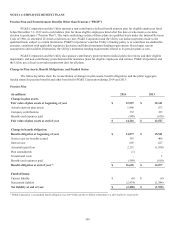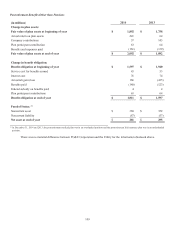PG&E 2014 Annual Report Download - page 107
Download and view the complete annual report
Please find page 107 of the 2014 PG&E annual report below. You can navigate through the pages in the report by either clicking on the pages listed below, or by using the keyword search tool below to find specific information within the annual report.99
The Tax Increase Prevention Act, signed into law on December 19, 2014, extended 50% bonus federal tax depreciation on
qualified property placed into service in 2014.
Carryforwards
As of December 31, 2014, PG&E Corporation had approximately $4.1 billion of federal net operating loss carryforwards
and $77 million of tax credit carryforwards, which will expire between 2029 and 2034. In addition, PG&E Corporation had
approximately $219 million of loss carryforwards related to charitable contributions, which will expire between 2015 and 2019.
PG&E Corporation had $123 million of California net operating loss carryforwards which will expire between 2033 and 2034 and
$30 million of California credit carryforwards, some of which will expire in 2024 and others which will carryforward indefinitely.
PG&E Corporation believes it is more likely than not the tax benefits associated with the federal net operating loss, charitable
contributions, and tax credits can be realized within the carryforward periods, therefore no valuation allowance was recognized as
of December 31, 2014. As of December 31, 2014, PG&E Corporation had approximately $24 million of federal net operating loss
carryforwards related to the tax benefit on employee stock plans that would be recorded in additional paid-in capital when used.
NOTE 9: DERIVATIVES
Use of Derivative Instruments
The Utility is exposed to commodity price risk as a result of its electricity and natural gas procurement activities.
Procurement costs are recovered through customer rates. The Utility uses both derivative and non-derivative contracts to manage
volatility in customer rates due to fluctuating commodity prices. Derivatives include forward contracts, swaps, futures, options,
and CRRs.
These instruments are not held for speculative purposes and are subject to certain regulatory requirements. Customer rates
are designed to recover the Utility’s reasonable costs of providing services, including the costs related to price risk management
activities.
Price risk management activities that meet the definition of derivatives are recorded at fair value on the Consolidated
Balance Sheets. As long as the current ratemaking mechanism discussed in Note 2, above, remains in place and the Utility’s price
risk management activities are carried out in accordance with CPUC directives, the Utility expects to recover fully, in rates, all
costs related to derivatives. Therefore, all unrealized gains and losses associated with the change in fair value of these derivatives
are deferred and recorded within the Utility’s regulatory assets and liabilities on the Consolidated Balance Sheets. Net realized
gains or losses on commodity derivatives are recorded in the cost of electricity or the cost of natural gas with corresponding
increases or decreases to regulatory balancing accounts for recovery from or refund to customers.
Cash collateral paid or received is offset against the fair value of derivative instruments executed with the same
counterparty under a master netting arrangement, where the right of offset and the intention to offset exist. Derivatives are
presented in the Utility’s Consolidated Balance Sheets on a net basis; see below.
The Utility elects the normal purchase and sale exception for eligible derivatives. Eligible derivatives are those that
require physical delivery in quantities that are expected to be used by the Utility over a reasonable period in the normal course of
business, and do not contain pricing provisions unrelated to the commodity delivered. The fair value of these items is not reflected
in the Consolidated Balance Sheets at fair value, eligible derivatives are accounted for under the accrual method of accounting.



